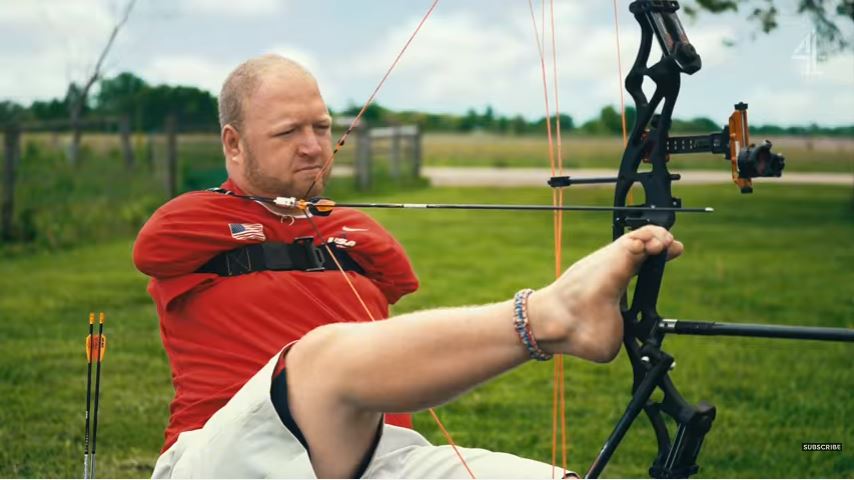
Celebrating “Superhumans” May Not Be Ideal for Humans
Whether or not you actually watch the Olympics and Paralympics, if you’ve at all been on social media in the last two weeks, you probably haven’t missed this video:
Produced by UK’s Channel 4, it is three minutes of exuberance that features about 140 people with disabilities, most of whom are Paralympians and musicians. I have to admit, the video grabs you and sweeps you away in a wave of excitement. It of course was designed to do that: we have an incredible vocalist singing Sammy Davis Jr.’s catchy “Yes I Can” as scores of remarkably talented people show off their talents—what’s not to be excited about? It’s meant to impress and it absolutely does impress, but this production has also received increasingly negative comments from the disability community, and it is important to understand why.
If you’re an American reader, you probably don’t know that this is the second time that Channel 4 has produced such an advertisement. In 2012 they released their first “Meet the Superhumans” video for the 2012 Paralympic games and in 2013 it was awarded three awards from D&AD—a company specializing in recognizing excellent design in advertisement. In 2012 Channel 4’s strategy was quite thorough. As the D&AD case study reports, “[r]esearch into athletes’ perceptions and audience attitudes was commissioned to help inform from the outset the overall vision and tone for both Channel 4’s Paralympic editorial coverage and marketing.” In other words, they really did their homework in order to increase excitement over the Paralympics—and they were successful. But the key difference between the 2012 and the 2016 videos is that the first one focused on Paralympic athletes.
The 2016 video, on the other hand, applies the superhuman label to “anyone with a disability”, as noted by Channel 4’s Chief Marketing and Communications Officer. News reporter, Katie Grant points out that this is precisely where the problem lies. She writes that the average person with a disability is treated as “subhuman” rather than “superhuman.” James Moore, Business Editor at the Independent, echoes Grant’s argument when he says that in the wake of the Paralympics, there may or may not be enough social awareness so that “tube passengers might even move to allow people on crutches to sit down, taxis might actually stop for those with wheelchairs or guide dogs. It might even be possible for people with disabilities such as myself to get out and about without people abusing us.”

A Paralympic archer holding his bow with his foot. The dangers of labeling people with disability as superhuman can be just as problematic as labeling them subhuman. (photo credit: Channel 4 UK, YouTube screenshot)
More than that, Moore notes that even Paralympic athletes contend with these injustices and indignities once the pomp and circumstance of the ceremonies is gone. “Only a year after the 2012 Paralympic Games in London, wheelchair racing legend David Weir had to take to the press to shame housing chiefs into providing him with a home with a downstairs toilet. He had been hauling himself up the stairs with his arms, putting himself at the risk of serious injury every time he did it,” Moore writes.
So while Channel 4’s mission to change viewer’s perceptions of Paralympic athletes is admirable and necessary, it seems their foray into conflating Paralympic athletes with regular people with disabilities is ill-considered. There is the moment at 2:14 minutes in the video where we see a person in a wheelchair being told “No, you can’t” in a career office. It is a great opportunity to delve into the actual realities of living with a disability, but the video fails to use the moment. It is over in three seconds and the next thing we see is wheelchair rugby (not even with the same person as in the employment office). So what is the video trying to tell us? If the systemic hurdles of your society block your path, you should become a super athlete? You’re just not pushing yourself hard enough? However I try to interpret the message, it appears unconvincing at best.
To be perfectly honest, I like the video on many levels. It is a tour de force of pure talent and certainly a positive depiction of people with disabilities. But when we consider it in the larger scheme of things, it may be one of those productions that unintentionally does harm. Given how few depictions of people with disabilities exist in the media, seeing “superhumans” is as inaccurate as seeing toxic and pathetic media representations. After all, if you wanted to make an advertisement that advocated for average people you would not use Michael Phelps or Serena Williams—but Channel 4 unthinkingly, and well-meaningly does just that.
Perhaps rather than having a rallying cry of “yes, I can” we could readjust to “together, we can” where we acknowledge that everyone—all genders, abilities, races, sexual orientations, ages, etc.—is responsible for creating an inclusive and fair society. At the end of the day, no champion ever reached the top all by themselves. It takes a team to change attitudes.
About the author Kristina Kopić, better known as Tina, is a former academic, a writer, a martial artist, and a fan of deconstructing all social constructs, especially those of gender, race, and disability in order to expose and challenge their injustices and create a more inclusive and fair world. She is the Advocacy Content Specialist at the Ruderman Family Foundation, lives with her wife, their two cats, and is currently dabbling in rugby.
Stay Included
To stay up to date on our most recent advocacy efforts, events and exciting developments, subscribe to our newsletter and blog!


















